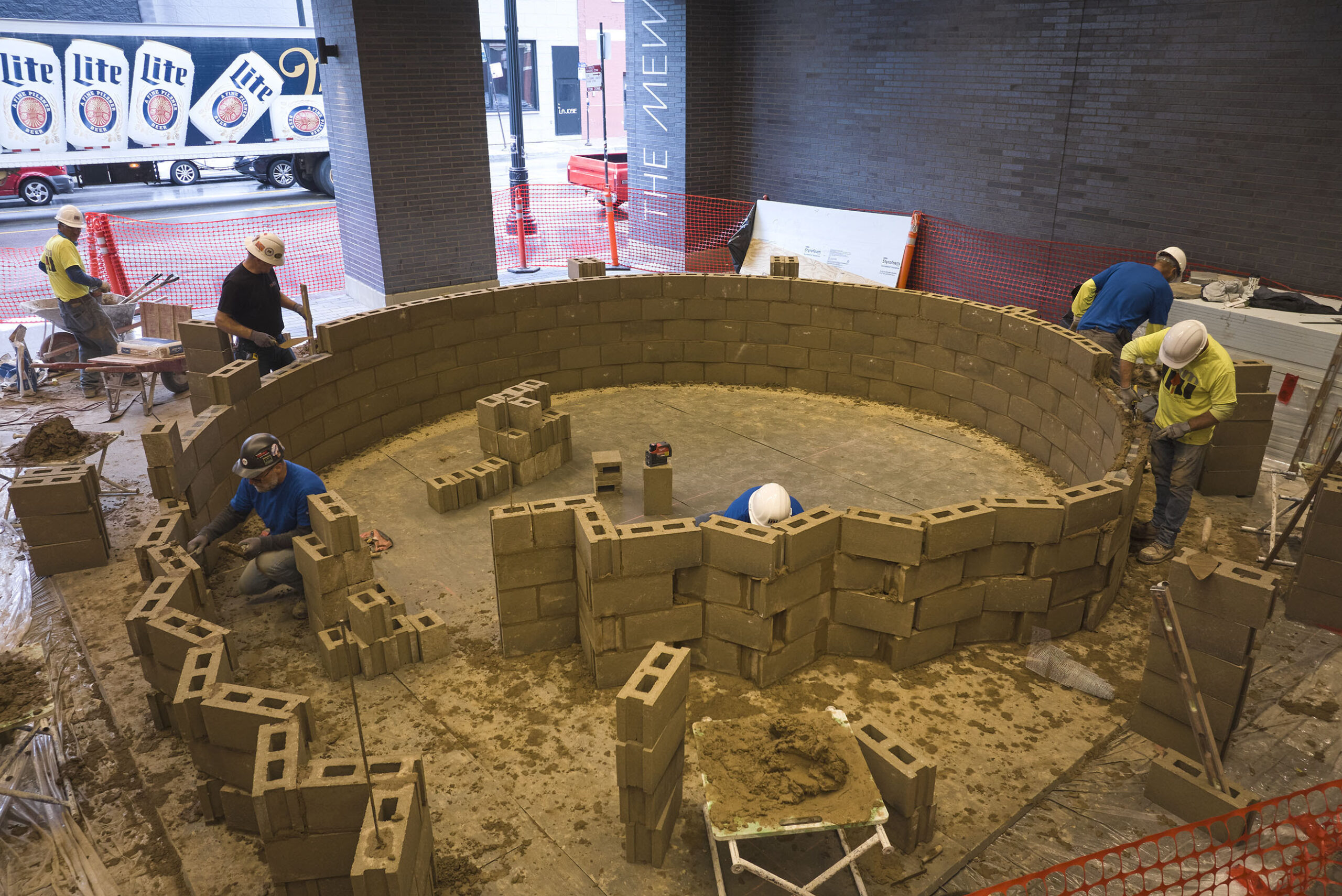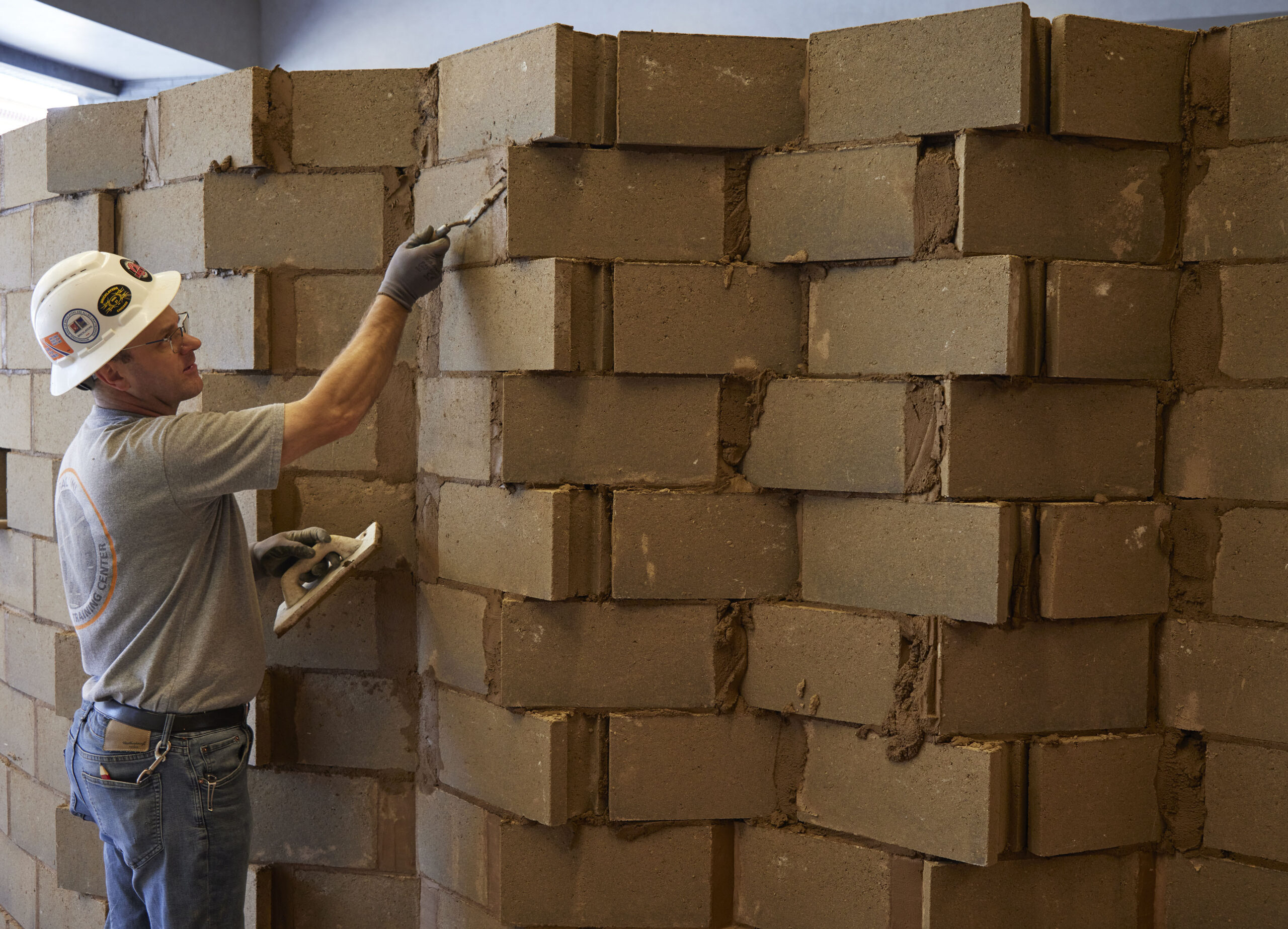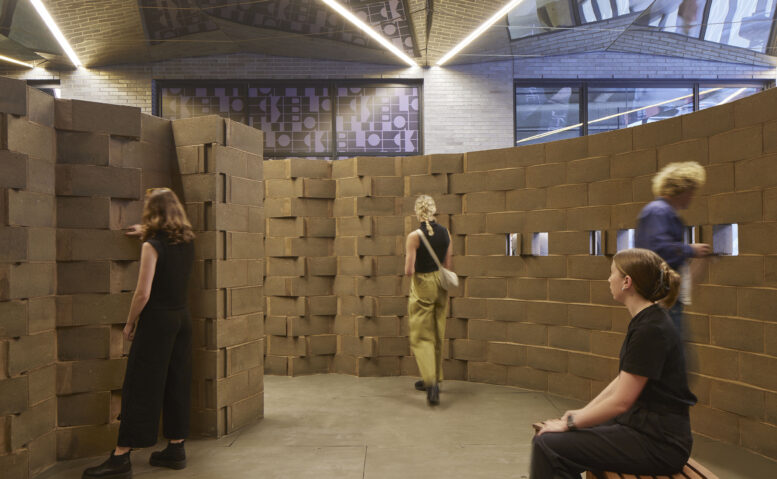For this year’s Chicago Architecture Biennial, architecture firm Skidmore, Owings & Merrill (SOM) introduced a concrete substitute made from algae, known as Bio-Blocks™. Integrated into a spiral wall for the demonstration, this material was developed in partnership with Prometheus Materials and offers a carbon-neutral construction alternative. The installation is located at The Mews in the Fulton Market District and is hosted by Shapack Partners, Focus, and Walton Street Capital. Biennial visitors can walk around the wall and observe its response to environmental factors like wind and moisture.

Bio-Blocks™ Spiral Installation. Photo by Dave Burk / SOM
The Bio-Block is produced using microalgae, which naturally sequester carbon dioxide and undergo a photosynthetic biocementation process that is patent-pending. If deployed at scale and used ubiquitously as a construction substitute, this alternative has the potential to reduce global CO2 emissions by up to 8%. The material is in the evaluation stage but is available for specific projects as a direct substitute for the carbon-intensive Concrete Masonry Units (CMUs) used in modern construction.
The Bio-Block Spiral was constructed using traditional masonry methods by union labor from organizations including the International Masonry Institute (IMI). For the spiral wall alone, the use of Bio-Blocks over standard concrete results in a carbon emissions reduction of one metric ton.

Bio-Blocks™ Spiral Installation. Photo by Dave Burk / SOM

Bio-Blocks™ Spiral Installation. Photo by Dave Burk / SOM
Structural adjustments, such as pleated ends, were made to the spiral wall to enhance its structural support. A documentary film is being played next to the installation to provide an overview of the manufacturing process and construction methods around the Bio-Blocks.
The Bio-Block Spiral received support from partners including 167 Green, Clayco, the International Masonry Institute, J&E Duff, Sherwin Williams, Cushing Co., and Spec Mix. The installation is open to the public daily from 8 a.m. to 8 p.m.
Subscribe to YIMBY’s daily e-mail
Follow YIMBYgram for real-time photo updates
Like YIMBY on Facebook
Follow YIMBY’s Twitter for the latest in YIMBYnews


No idea on the budget for the biannual, but it’s great to see other chunks of the city integrate the events besides just open houses.
This thing is still young, but past renditions seemed to speak to a more elevated/sophisticated state of mind that sometimes felt too abstract.
I like the idea of engaging with all chunks of Chicago’s fabric and visitors alike, not just the long-educated problem solvers of the world.
I brought my family to a couple of exhibits in the Cultural Center. They were happy I was excited but put off by not “getting it.” It makes sense but shows the accessibility of the content can still use some fine-tuning.
Does “The Mews” in the “Fulton Market District” have one of those newfangled “street addresses”?